A little after sunrise, the wind was calm and the sky was entirely clear. The surface of the lake mirrored the unblemished blue from above. The morning silence was broken by the strident flight calls of two Black-necked Stilts as they settled near the water's edge.
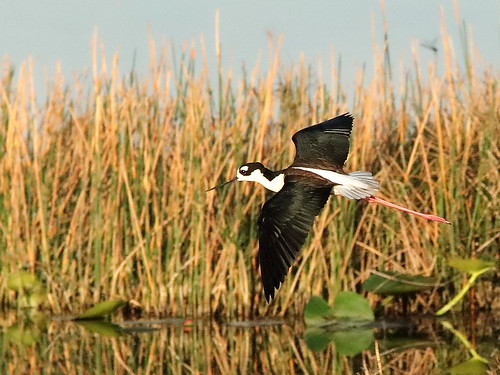


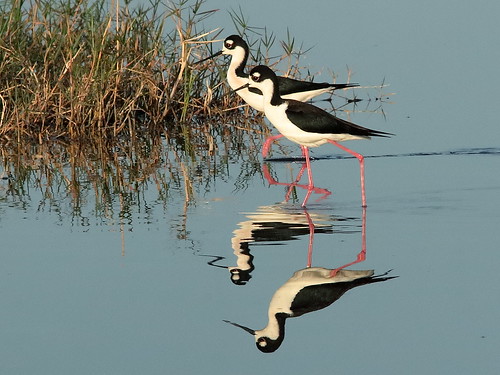
Two more arrived...
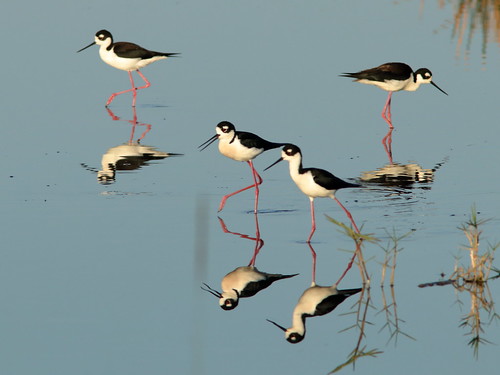
and three others joined them, seven in all:
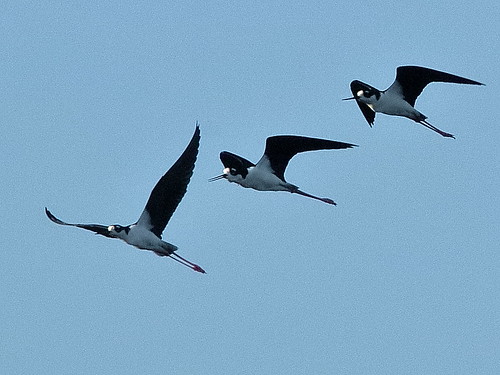
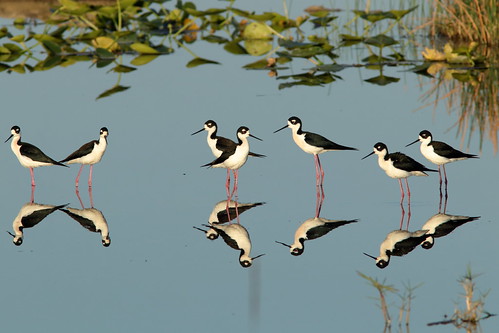
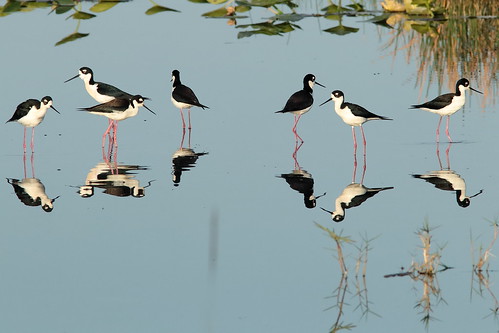
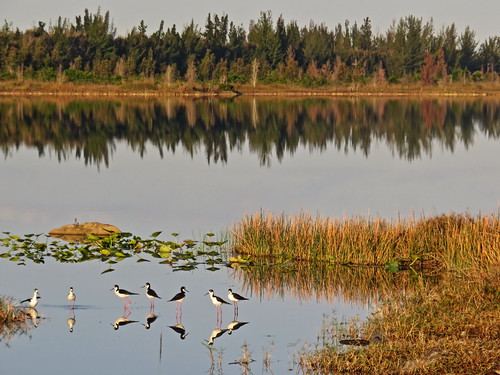
My camera's auto-focus was confused about whether to sharpen the real or the virtual image, and I too was a bit dazzled by the sight of fourteen black and white red-legged birds. Over the open water there was no sense of depth perception and my photos appeared to be two-dimensional:

It was like spelling banana-- I didn't know when to stop!
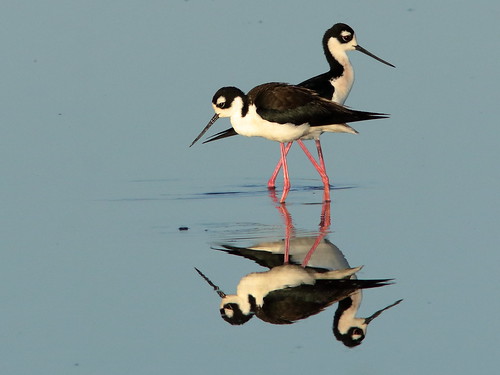
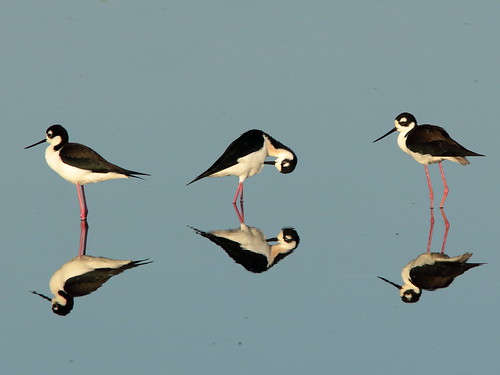
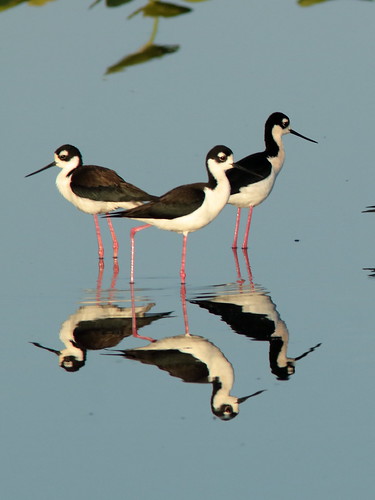
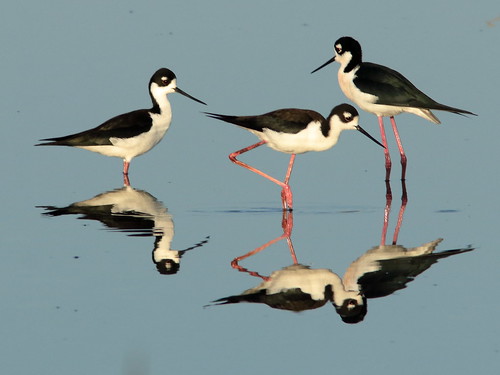
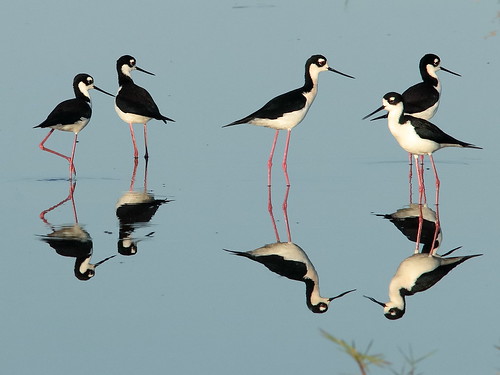
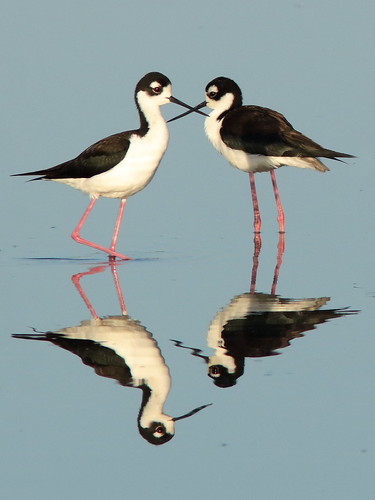
 Suddenly they flew off together and left me all alone, looking at an empty mirror:
Suddenly they flew off together and left me all alone, looking at an empty mirror:
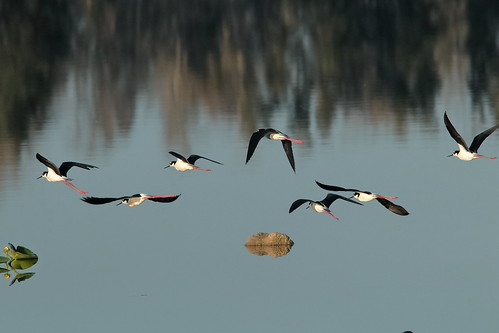
The next day (April 2), the Sun again rose against a cloudless sky. Venus shone above the crescent Moon:
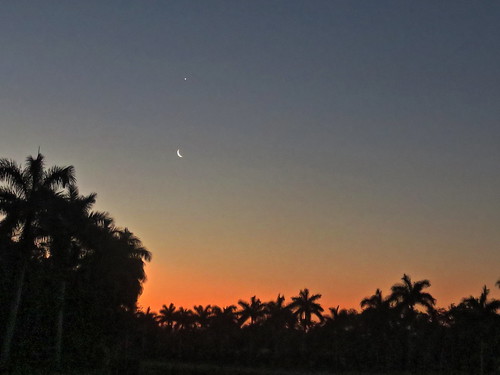
In the semi-darkness twenty minutes before sunrise, I had set my camera at maximum sensitivity and was rewarded when an Eastern Screech-Owl decided to call from a small tree next to the path. I did not use a flash and the image is a bit soft (hand-held with an exposure of 1/20 second at ISO 16,000). Click on the photo and look closely at its eyes to see a reflection of dawn's light on the horizon:
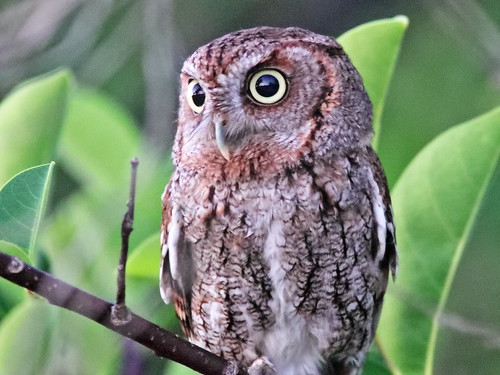
 = = = = = = = = = = = = = = =
= = = = = = = = = = = = = = =
Linking to Misty's CAMERA CRITTERS,
Linking to Eileen's SATURDAY'S CRITTERS,
Linking to SKYWATCH FRIDAY by Yogi, Sylvia and Sandy
Linking to WEEKEND REFLECTIONS by James
Linking to BirdD'Pot by Anni
Linking to Our World Tuesday by Lady Fi
Linking to Wild Bird Wednesday by Stewart
Linking to Wordless Wednesday (on Tuesday) by NC Sue
Linking to ALL SEASONS by Jesh
________________________________________________
Please visit the links to all these memes to see some excellent photos on display
________________________________________________
Photographing birds in flight has always been a challenge for me. Slow-moving targets are not too difficult to keep in sight, but framing them in the viewfinder is only the first step in the process. They must also be kept in focus and the exposure must compensate for the brightness of the subject and the intensity of light in the background.
The pink sky is bright, causing the camera to "squint," so the exposure must be manually increased to keep the Great Egret from being darkly shadowed:
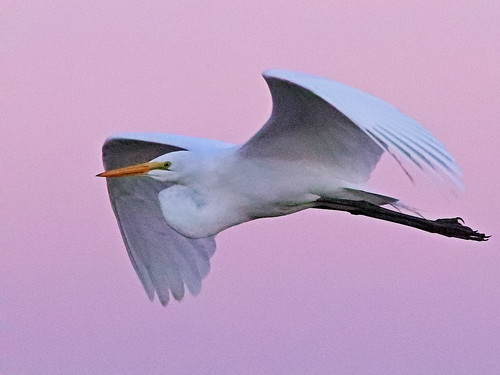
The blue water is darker, and the camera tries to compensate by increasing the exposure. This tendency must be reigned in to keep from over-exposing the white bird:

With small birds perched in the foliage, the camera tends to take care of all this automatically. I usually just set the aperture as wide as possible, to isolate the subject from distracting objects in the background. Birds in groups or in flight are not as accommodating, so the aperture must be narrowed to allow a greater depth of sharp focus, as was necessary with these White Ibises:

A dark and a white bird against the morning sky-- a Little Blue Heron had a close encounter with a Great Egret:

Black birds in flight are particularly troublesome, as their plumage provides little contrast to show off their feather patterns. Reflected sunshine and pure luck allowed me this shot of a Double-crested Cormorant:
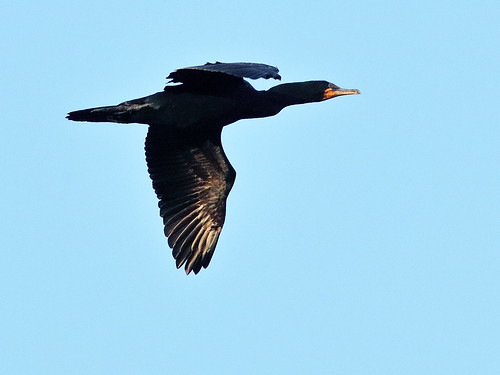
A Red-winged Blackbird puffed up his feathers to catch the light:
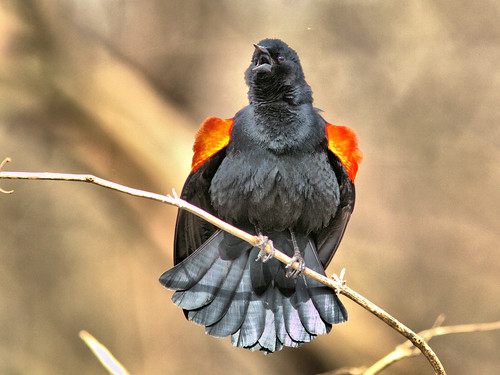
Direct sunlight reveals the iridescence of a Common Grackle...
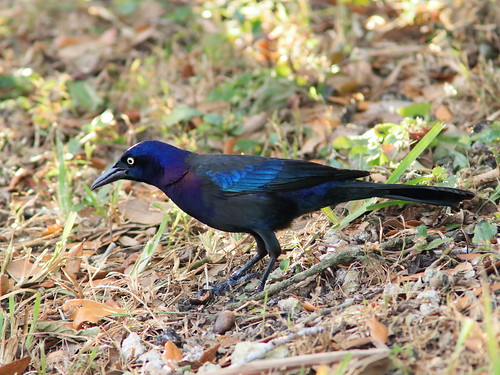
...and a Boat-tailed Grackle:
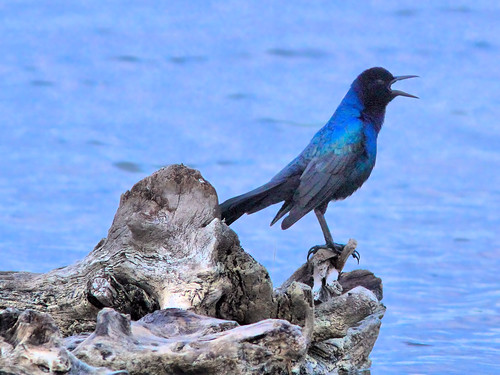
White birds sometimes show up best when they are illuminated from the side or even slightly from behind:
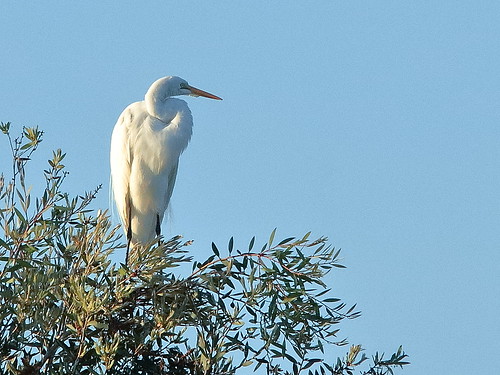
The sky has presented some interesting sights this month. Since we walk out into the wetlands in pre-dawn darkness, we are aware of the movements of celestial objects-- the Moon, planets and bright stars.
Lately we have watched Venus move towards the eastern horizon. On the morning of January 2, the waning crescent Moon was aligned with Venus and Jupiter.
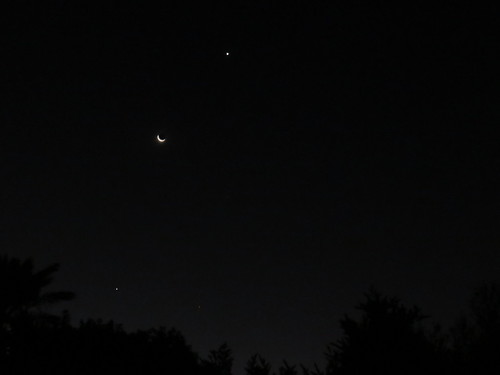
Both planets brightened up as they moved away behind the sun, appearing to move closer together. Actually, the distance between them is never less than 365 million miles. Venus is much closer to the sun and moves along its 422.5 million mile orbit at 78,337 mph (35.02 km/second). Jupiter moves more slowly, at 29,236 mph (13.07 km/second), along its huge 3 billion mile orbit and takes 4331 days to circle the sun.
On January 17, they shone brightly before sunrise:

This week we witnessed a "double feature," first a full eclipse of the Moon on January 20. The Wolf Moon rose over our back yard:
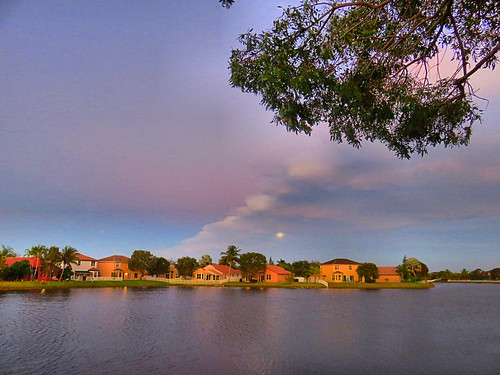 My hand-held images are not very crisp:
My hand-held images are not very crisp:

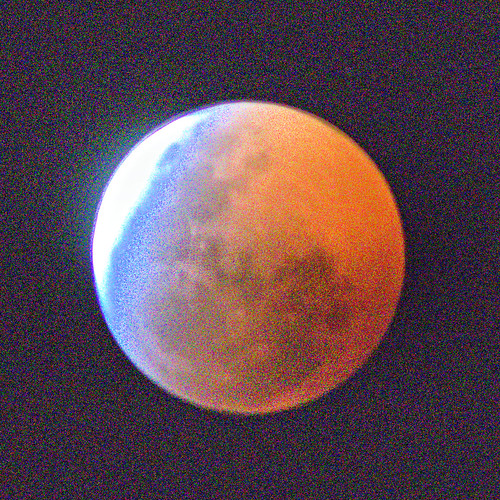

Then, stormy skies caused us to miss the conjunction of Venus and Jupiter, when they would be horizontally aligned. Their conjunction on January 22 would bring them almost 2 degrees apart, about the width of 5 full Moons. Here they were on January 21:

The morning after the conjunction (January 23) was also overcast, and they briefly peeked out from behind the clouds. Now Venus had moved beneath Jupiter:

= = = = = = = = = = = = = = =
Linking to Misty's CAMERA CRITTERS,
Linking to Eileen's SATURDAY'S CRITTERS,
Linking to SKYWATCH FRIDAY by Yogi, Sylvia and Sandy
Linking to WEEKEND REFLECTIONS by James
Linking to BirdD'Pot by Anni
Linking to Our World Tuesday by Lady Fi
Linking to Wild Bird Wednesday by Stewart
Linking to Wordless Wednesday (on Tuesday) by NC Sue
Linking to ALL SEASONS by Jesh
________________________________________________
Please visit the links to all these memes to see some excellent photos on display
________________________________________________





































